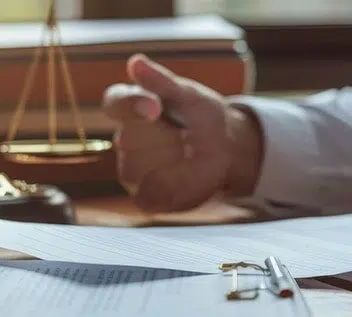A police accident report is essential for insurance claims and legal issues after a car accident. This guide will show you how to obtain, submit, and use a police accident report.
Key Takeaways
- A police accident report is essential for insurance claims and legal matters, providing a clear and objective account of the incident.
- The online submission process for police accident reports is straightforward; ensure all required information is gathered beforehand to avoid complications.
- Accuracy in submitting details for a police accident report is critical, as discrepancies may lead to legal penalties and could affect the validity of your claims (and therefore, your ability to secure compensation).
Why You Need a Police Accident Report
A police accident report acts as a crucial piece of evidence in both insurance claims and legal matters, providing an official account of the incident. Think of it as a neutral witness, documenting the details that you might overlook or forget. When you’re pursuing compensation for personal injuries, this report can significantly bolster your case.
Insurance adjusters often request a police report to confirm accident details and assess the validity of claims. This document provides crucial information like the date, time, and location of the incident, along with an unbiased summary from law enforcement. It helps establish facts and clarify liability, making it difficult to prove liability without it since disputes may hinge solely on personal accounts.
Furthermore, the absence of a police accident report may result in insurers rejecting or undervaluing your claim, leading to an unfair settlement. Filing a police report, though not always legally required, is recommended to protect your rights, particularly if you plan to file a personal injury claim. It serves as an objective record, offering a neutral account that can be referenced as needed.
How to Submit a Police Accident Report Online
Submitting a police accident report online is convenient in today’s digital age. Start by gathering necessary information like vehicle specifics, personal details, and an overview of the damage. Having this information ready will streamline the process.
With all required details in hand, follow these steps to submit your crash report:
- Visit the appropriate website.
- Locate the dedicated section for crash report submission, which most police departments offer.
- Follow the instructions carefully, filling in all the requested fields accurately.
- Before finalizing, print a copy for your records.
After submitting the report, you will usually receive a confirmation email in the form of a reference number or a copy of the submitted report. Keep this information safe, as you might need it to respond for further correspondence with insurance companies or legal representatives.
Submitting a crash report online is not only quick but also ensures that the details are officially documented.
Accessing and Purchasing a Copy of Your Police Accident Report
Obtaining a copy of your police accident report can be done online, and it’s a straightforward process. Typically, you can obtain a certified crash report for a total fee of $22, which includes a $7 search fee and a $15 report fee. This fee covers the cost of searching for and delivering the report.
After purchasing the report, it will be delivered either via email or regular US mail, based on your preference. Note that an online search for a crash report may incur charges even if the information provided is incorrect or the report is not found. Double-check the details to avoid unnecessary expenses.
If the DMV cannot locate a crash report based on the submitted details, it will inform the requester via certified mail. This ensures that you are aware of any issues with your request and can take the necessary steps to correct it. Additionally, filing false information while requesting a crash report can lead to legal penalties, so accuracy is paramount.
Once you access the report online, keep the following in mind:
- Download the report within seven days of purchase to avoid needing to repurchase it.
- It typically takes up to seven business days for a collision report to become accessible online.
- Plan accordingly and keep track of your purchase and download deadlines.
Information Required for a Police Accident Report
When completing a police accident report, certain key pieces of information are required to ensure the report is comprehensive and accurate. Vehicle specifics, such as make, model, year, and license plate numbers, are necessary details that need to be included. These details help identify the vehicles involved and their conditions at the time of the accident.
Additionally, a diagram illustrating the accident scene in the city, including road signs and traffic signals, may be part of the report. This visual representation can be crucial in understanding the dynamics of the collision and establishing a link to the events.
Individuals involved in the accident should provide the following information when requested by law enforcement or for DMV submission:
- Name
- Address
- Motor vehicles information
- Insurance policy details
- A broad overview of the damage
Each of these pieces of information plays a critical role in painting a clear picture of the incident.
Accurately providing all necessary details ensures the crash report is a reliable document for insurance claims and legal matters.
Common Causes of Collisions and Their Impact
Knowing the common causes of collisions aids in understanding crash report information. Distracted driving, a leading cause in the U.S., results in 1,000 injuries daily, highlighting the critical need to stay focused while driving and the severe consequences of negligence.
Crash reports often detail the nature of the incident, including any suspected causes such as speeding or intoxication. These details are crucial for determining fault and liability. The report also typically describes road conditions and weather at the time of the accident, providing a comprehensive view of the factors that may have contributed to the collision.
Evidence from phone records can also play a significant role in securing damages from a defendant-driver engaged in distracted driving. Understanding these common causes and their impact helps you appreciate the thoroughness needed in documenting an accident in a crash report.
Steps to Take Immediately After a Collision
After a collision, certain steps must be taken to ensure safety and proper documentation. The first priority is seeking immediate medical assistance if needed. Promptly addressing injuries is crucial for health and future legal claims.
Next, call law enforcement to obtain a police accident report, which will serve as an official record for insurance and legal purposes. Provide all necessary details to the police and ensure the report is complete and accurate.
Lastly, before speaking to insurers, contact an attorney. Legal professionals can guide you on handling communications with an insurance company to protect your interests. Following these steps ensures the incident is properly documented and your rights are safeguarded.
Legal Implications of a Police Accident Report
In legal contexts, police accident reports serve as essential evidence, helping courts assess testimonies and make informed decisions regarding compensation. These reports record names and information about injured parties, along with their injuries and whether they were hospitalized. This detailed documentation can significantly influence the outcome of legal cases.
The initial assessment of fault provided in a police report can sway insurance investigations and impact the determination of liability and damages. Courts often rely on these reports to understand the sequence of events and the responsibilities of each party involved in the accident.
Moreover, police reports from the police department are admissible as evidence in public lawsuits, affirming factual narratives or countering inaccurate narratives from defendants. This makes them invaluable in legal proceedings, where establishing the truth is paramount.
Contacting an Attorney for Legal Guidance
If you’ve been involved in an accident, contacting an attorney for legal guidance is wise. Many personal injury lawyers work on a contingency fee basis, meaning they only get paid if you win your case. This ensures your attorney is motivated to achieve the best possible outcome for you, and minimizes your costs drastically.
Attorneys utilize police reports to support their arguments in court, challenging opposing claims and cross-examining witnesses. This can be crucial in proving negligence and securing compensation. Individuals injured in an accident should consider the possibility of a lawsuit, as damages could lead to substantial compensation if negligence is proven.
For those seeking legal assistance, individuals can contact 1-800-THE-LAW2 to connect with an experienced local attorney for a free legal consultation. Our service can connect you with a qualified attorney in just 10 minutes or less, giving you the ability to access timely and expert guidance for your case.
Summary
In summary, obtaining a police accident report is a critical step in managing the aftermath of a collision. This report serves as an objective record, essential for insurance claims and legal proceedings. Submitting and accessing the report online has made the process more convenient, but accuracy and attention to detail remain paramount.
By understanding the importance of this report, gathering the necessary information, and following the recommended steps, you can ensure that your rights are protected and your case is well-documented. Whether dealing with insurance companies or navigating legal challenges, having a comprehensive police accident report can make all the difference.
Frequently Asked Questions
A police accident report is important as it serves as essential evidence for insurance claims and legal proceedings, offering an official and unbiased account of the incident.
To submit a police accident report online, gather all necessary information and visit the relevant website. Be sure to print a copy of the report for your records before finalizing the submission.
A police accident report requires vehicle specifics, personal information, insurance policy details, and a diagram of the accident scene. It is essential to provide accurate and complete information for effective documentation.
To access and purchase a copy of your police accident report, you can obtain a certified crash report online for a fee, and it will be delivered via email or mail. It is important to ensure the accuracy of the details provided to avoid additional charges.
Police accident reports hold significant legal implications, as they can serve as crucial evidence in establishing fault, liability, and potential compensation in legal proceedings.















